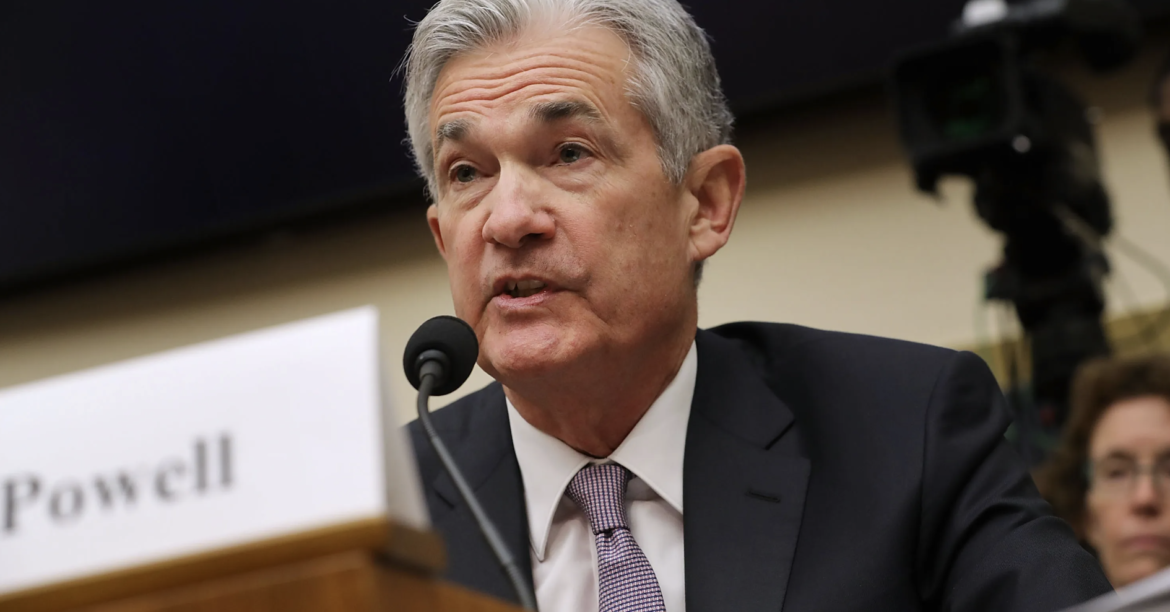In his first public intervention since data releases showed the central bank struggling to cool the US economy despite a year-long campaign of monetary tightening, the Fed chair signaled his readiness to ratchet up rate increases to combat persistent price rises.
Powell told the Senate banking committee that “the ultimate level of interest rates is likely to be higher than previously anticipated” and said recent economic data was “stronger than expected”.
He added: “If the totality of the data were to indicate that faster tightening is warranted, we would be prepared to increase the pace of rate hikes.”
The Fed chair’s remarks prompted a stock market sell-off, with the S&P 500 down almost 1 per cent in late-morning trading in New York while the Nasdaq fell 0.84 per cent. The two-year Treasury yield, which moves with market expectations, rose to its highest level since 2007. The dollar rose 1 per cent against the euro on the day at $1.0572.
Traders increased their bets on a half-point rate rise at the Fed’s March 21-22 meeting, with the odds now favoring such a rise rather than a quarter-point increase, according to the CME Group.
The central bank has reduced the size of its rate rises from 0.75 percentage points between June and November to a half-point rise in December. It shifted down again in February to a more traditional quarter-point increase.
The Fed’s main interest rate is now at a target range between 4.5 per cent and 4.75 per cent, compared with near zero at this time last year. In December, Fed officials projected interest rates would reach a peak of 5.1 per cent this year.
But Powell’s comments signal he is willing to squeeze the economy further to push inflation down.
His hawkish rhetoric is in line with statements from Christine Lagarde, president of the European Central Bank, who warned at the weekend that price pressures were “sticky”, requiring further action to tackle the inflation “monster”. Financial markets now expect the European rate to rise from 2.5 per cent to above 4 per cent.
By contrast, Andrew Bailey, Bank of England governor, has been cautious not to give a precise steer on UK interest rates.
Two critical data releases due before the Fed’s meeting this month will help to inform its next decision on rates: the monthly jobs report on Friday and the consumer price index report for February, published next week.
Investors and economists will be watching to see whether the rebound in the labor market and consumer demand in January was sustained last month.

Powell said the hot data “likely reflects the unseasonably warm weather” but also indicates “inflationary pressures are running higher than expected”.
Democrats have been growing increasingly anxious that the Fed will go too far in tightening monetary policy, triggering a recession that could undermine many of the labor market gains achieved during the recovery from the coronavirus pandemic. But Powell maintained that getting core inflation to the Fed’s 2 per cent target from January’s level of 4.7 per cent would “very likely” require “some softening in labor market conditions”, suggesting job losses ahead.
“We cannot risk undermining one of the successes of our current economy,” Sherrod Brown, chair of the Senate banking committee, said.
In a separate exchange with John Kennedy, the Republican senator from Tennessee, Powell rejected the idea that bringing inflation back down would push the unemployment rate above 10 per cent.
Instead, he said the Fed saw a “path” to getting inflation under control “with less significant effects on the labor market”.
Powell also faced questions on banking regulation, with Democrats pressing the Fed to tighten capital standards for the largest institutions, and Republicans pleading for looser treatment. Michael Barr, the Fed’s vice-chair for oversight, is leading a review of capital rules.
